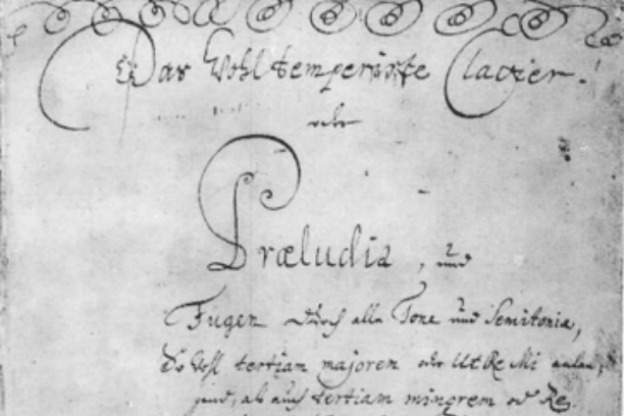
Well-Tempered Clavier
Bach’s Well-Tempered Clavier, fondly known as the great "48" comprises two sets of preludes and fugues composed in every major and minor key of the chromatic scale. These are some of Bach’s most enduring works—the first volume dates from 1722, the second book completed much later in 1744. In that age of ubiquitous unequal temperaments (or tuning systems) that favored sweet and pure intervals in some keys but rendered those with too many sharps or flats unusable (or at least a little bit wonky!), a "well-tempered" tuning system, which these pieces reference in their title, is thought to have been Bach’s solution to composing in even the most remote keys.
But besides all this, the Well-Tempered Clavier is a feast of both old and progressive styles, alongside nationalistic influences and various compositional techniques that display the wealth of Bach’s genius and imagination.
They’ve been an ongoing source of inspiration too. There are so many recordings of Bach's "48" on both piano and harpsichord, and this certainly with good reason. These pieces have been admired, almost consistently, since he wrote them. They are truly a monument of western music history.
Christophe Rousset plays Bach’s second book of the Well-Tempered Clavier on a 2013 Aparte label release using a 1628 Ruckers double manual harpsichord housed at the Palace of Versailles.
Arrangements of Well-Tempered Clavier
Looking back from Rousset and beyond recent generations of keyboard players, Schumann is known to have revered Bach’s Well-Tempered Clavier. And even before the first printed edition was published the pieces seem to have circulated widely. In 1783, an article appeared in Cramers Magazin der Musik that mentioned how well the young Beethoven could play Bach’s Well-Tempered Clavier…and then there was Mozart, too, who like many others of his time studied and made his own arrangements of Bach’s music.
Akademie fur Alte Musik offers a different take on Bach's Well-Tempered Clavier. Several of the tracks on their 2014 Harmonia Mundi release pair anonymous 18th-century preludes with Mozart arrangements of fugues written by Bach, which the ensemble has re-orchestrated for their performances.
The way the program unfolds in various instrumentations through the course of the entire CD makes for really nice listening. The variety keeps the interest, and the playing is top notch. That being said, it takes a lot of effort and a very close reading of the liner notes to figure out what you are hearing on the Akademie’s recording. It’s tricky to figure out if the track you’re hearing is spurious, or by a fellow named "Anonymous," or something newly composed by Mozart, or Mozart a la Bach, and so on. A few more upfront clues in the track listings would have made all the difference in fully enjoying this release as a whole package.
Mozart's Connection to Bach
A story of how Mozart came to know Bach’s music tells us a lot. In 1782, Mozart wrote a letter to his Dad, telling him, “Every Sunday I go to Baron van Swieten’s and nothing is played there except Handel and Bach.”
Who was Baron van Swieten? Well, he was a music lover who hosted chamber music parties and concerts in his home. He also had a large collection of manuscripts by Bach and Handel in his library, which Mozart copied and later imitated in some of his own pieces. One of Mozart's pieces in which Bach’s influence is evident is in the Fuga a due Cembale. Though not directly related, Mozart's fugue shares some characteristics with Bach’s famous Musical Offering—not only in key, but also in the outline of the underlining and constantly repeating theme.









